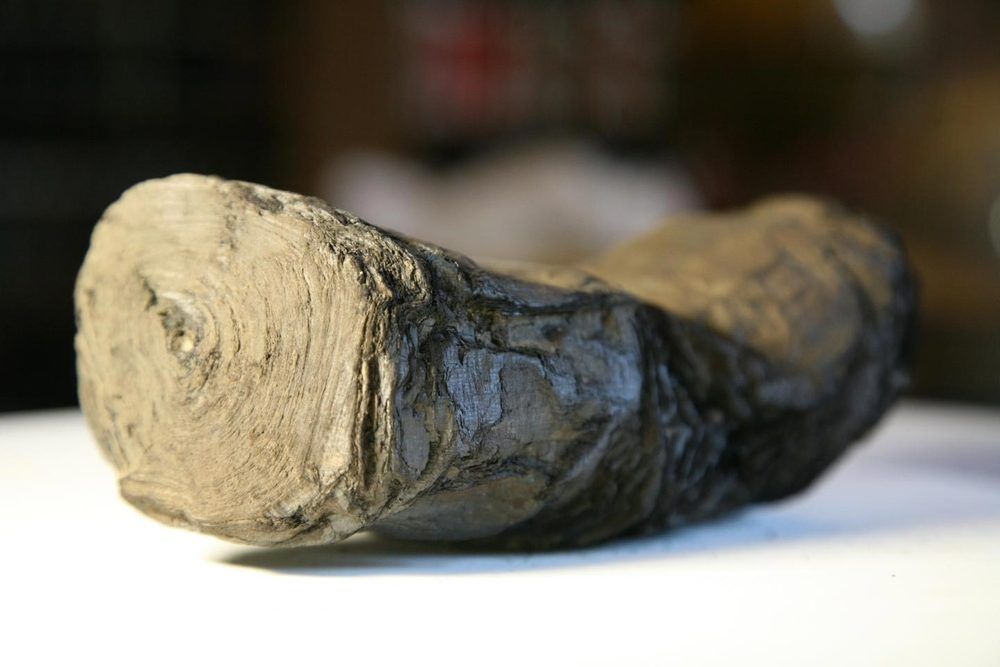An experiment that partially revived slaughterhouse pig brains raises questions about the precise end point of life.
Page 8595
Oct 9, 2019
Watching This Volcano Erupt From Space Is Absolutely Epic
Posted by Genevieve Klien in category: space
The image above shows convection currents causing a vertical plume to rise above the volcano.
There are about 300 volcanoes in the surrounding areas according to NASA, roughly 29 of them active. The reason why there are so many is because the peninsula lies on top of a tectonic ridge where the Pacific plate is being pushed underneath the North American plate.
Oct 9, 2019
Brain tunes itself to criticality, maximizing information processing
Posted by Genevieve Klien in categories: biological, computing, neuroscience
Researchers long wondered how the billions of independent neurons in the brain come together to reliably build a biological machine that easily beats the most advanced computers. All of those tiny interactions appear to be tied to something that guarantees an impressive computational capacity.
Over the past 20 years, evidence mounted in support of a theory that the brain tunes itself to a point where it is as excitable as it can be without tipping into disorder, similar to a phase transition. This criticality hypothesis asserts that the brain is poised on the fine line between quiescence and chaos. At exactly this line, information processing is maximized.
However, one of the key predictions of this theory—that criticality is truly a set point, and not a mere inevitability—had never been tested. Until now. New research from Washington University in St. Louis directly confirms this long-standing prediction in the brains of freely behaving animals.
Oct 9, 2019
Light 10 Billion Times Brighter Than the Sun Illuminates 2,000-Year-Old Herculaneum Scrolls
Posted by Genevieve Klien in categories: materials, neuroscience
Researchers led by the renowned ancient artifacts decoder, Professor Brent Seales, will be using Diamond, the UK’s national synchrotron science facility in the heart of Oxfordshire, to examine a collection of world-famous ancient artifacts owned by the Institut de France. Using this powerful light source and special techniques the team has developed, the researchers are working to virtually unwrap two complete scrolls and four fragments from the damaged Herculaneum scrolls. After decades of effort, Seales thinks the scans from Diamond represent his team’s best chance yet to reveal the elusive contents of these 2,000-year-old papyri.
Prof Seales is director of the Digital Restoration Initiative at the University of Kentucky (US), a research program dedicated to the development of software tools that enable the recovery of fragile, unreadable texts. According to Seales, Diamond Light Source is an absolutely crucial element in our long-term plan to reveal the writing from damaged materials, as it offers unparalleled brightness and control for the images we can create, plus access to a brain trust of scientists who understand our challenges and are eager to help us succeed.?Texts from the ancient world are rare and precious, and they simply cannot be revealed through any other known process. Thanks to the opportunity to study the scrolls at Diamond Light Source, which has been made possible by the National Endowment for the Humanities and the Andrew Mellon Foundation, we are poised to take a tremendous step forward in our ability to read and visualize this material.
Oct 9, 2019
First-of-Its-Kind Quantum Vibration Produced by Shooting a Laser at a Diamond
Posted by Genevieve Klien in categories: particle physics, quantum physics
Scientists have observed a quantum vibration at normal room temperature for the first time, a phenomenon that usually requires ultra-cold, carefully calibrated conditions – bringing us another step closer to understanding the behaviour of quantum mechanics in common materials.
The team was able to spot a phonon, a quantum particle of vibration generated from high-frequency laser pulses, in a piece of diamond. These phonons are notoriously hard to detect, partly because of their sensitivity to heat.
What makes observing a phonon so important is that it shows a vibration acting as a single unit of energy (as described by quantum mechanics), as well as a wave (as described by classical physics). At room temperature in open air conditions, it brings quantum behaviour “closer to our daily life” in the words of the researchers.
Oct 9, 2019
Financial services sector needs rewiring as digital assets gain greater institutional acceptance
Posted by Derick Lee in categories: economics, finance
Digital assets will only continue to grow. With clearer regulation coming in the near future, large financial institutions such as banks and asset managers will have the official ‘stamp of approval’ needed to participate in the market, driving tokenisation of existing asset classes and substantial capital inflows to the sector.
How investment in safekeeping technology will help determine the winners in Asia’s new token economy.
Oct 9, 2019
Cervical cancer ‘cure’ closer with gene-editing breakthrough, scientists say
Posted by Paul Battista in categories: bioengineering, biotech/medical, genetics
Queensland researchers say they can cure cervical cancer in mice using gene editing technology and are now working towards human trials.
Oct 9, 2019
Klotho: Queen of Anti-Aging Proteins
Posted by Tanvir Ahmed in categories: biotech/medical, life extension, neuroscience
Klotho, named after one of the Fates of Greek mythology, is the queen of anti-aging proteins. There are no close contenders at this time. Klotho gene therapy, like the one offered by Integrated Health Systems, has tremendous benefits. While it is produced primarily in the kidneys and brain, its soluble form circulates throughout the body. Many of the investigations so far have been done nephrologists interested in its prominent role in Chronic Kidney Disease (CKD), yet over the last decade its multifaceted role in the aging process has become a topic of intense research.
Klotho deficient mice show premature aging in multiple organs.
Inducing KL overexpression with a viral vector, like AAV, not only reverses this premature aging, but also enhances resistance to oxidative and ischemic damage. More impressive, KL outright extends the lifespans of mice, likely be inhibiting IGF and insulin signalling. Dubbed an “aging suppressor gene,” it can yield results similar to caloric restriction – what is, at this time, the most tried and true method of extending the lifespans of a variety of model organisms.
Oct 8, 2019
Meet America’s newest military giant: Amazon
Posted by Saúl Morales Rodriguéz in categories: computing, military
The Pentagon’s controversial $10bn JEDI cloud computing deal is one of the most lucrative defense contracts ever. Amazon’s in pole position to win—and its move into the military has been a long time coming.
Oct 8, 2019
The US just blacklisted 8 Chinese AI firms. It could be what China’s AI industry needs
Posted by Saúl Morales Rodriguéz in categories: business, government, policy, robotics/AI
The US Commerce Department has said it is adding 28 Chinese government organizations and private businesses, including eight tech giants, to its so-called Entity List for acting against American foreign policy interests.
What does that mean? The move effectively bars any US companies from selling technology to the blacklisted firms and organizations without US government approval.
Why? The US says they have been involved in human rights violations against Uighurs and other predominantly Muslim ethnic minorities in the Xinjiang region.


















